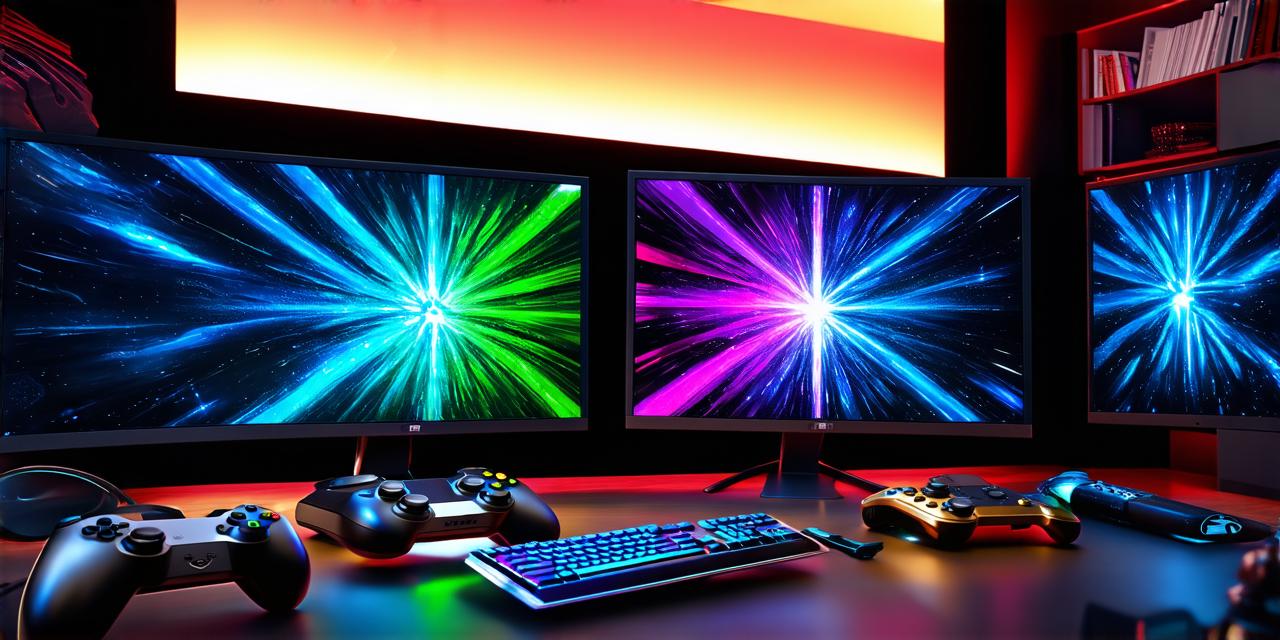
The world of video games has been rapidly evolving, and creating a 3D first-person game is one of the most popular trends among gamers. In this article, we will be exploring how to create a 3D first-person game using Unity, the most widely used game engine. We will cover everything from setting up your development environment to creating game mechanics and optimizing your game for better performance.
Getting Started:
The first step in creating a 3D first-person game is to set up your development environment. You will need a computer with at least a quad-core processor, 8GB of RAM, and a dedicated graphics card (GPU) like Nvidia or AMD. You can download Unity from the official website and install it on your computer.
Once you have installed Unity, you will need to create a new project. To do this, open Unity and select “New Project.” Choose a template for your game, such as 3D First-Person Shooter or Action Adventure, and give your project a name. Select the location where you want to save your project and click on “Create Project.”
Designing Your Game:
Now that you have set up your development environment, it’s time to start designing your game. Unity has a built-in editor called the Unity Editor, which allows you to create and manipulate 3D objects in your game world. You can use the editor to add terrain, buildings, characters, and other elements to your game.
To design your game, start by creating a basic level. Use the editor to place terrain and add basic structures like trees, rocks, and rivers. Once you have a basic layout, add characters to the level. You can use Unity’s built-in animation tools to create realistic character movements.
Next, add game mechanics to your game. This includes things like player movement, shooting, and interacting with objects in the environment. To do this, you will need to write code using Unity’s scripting language called C. There are plenty of resources available online for learning C, including tutorials and documentation from Unity itself.
Optimizing Your Game:
As your game grows more complex, performance issues can arise. To optimize your game for better performance, you will need to use techniques like level design optimization and asset compression.
Level design optimization involves designing your levels in a way that minimizes the amount of work your computer has to do to render them. This includes things like reducing the number of objects in each level and using textures efficiently. You can also optimize your game’s frame rate by tweaking settings like shadow quality and anti-aliasing.
Asset compression involves reducing the size of your game’s assets, such as textures and 3D models. This can be done using tools like Photoshop or Unity’s built-in asset import settings. By compressing your assets, you can reduce the amount of data your game has to download and run faster on lower-end systems.
Creating a Compelling Narrative:
Finally, to create a truly great 3D first-person game, you will need to create a compelling narrative that keeps players engaged throughout the game. This includes things like writing dialogue, creating memorable characters, and crafting a story that resonates with your audience.
To create a compelling narrative, start by brainstorming ideas for your game’s plot. Think about the themes you want to explore and the messages you want to convey. Once you have an idea for your game’s story, write dialogue and create characters that bring it to life.
FAQs:
1. What hardware do I need to run Unity?
To run Unity, you will need a computer with at least a quad-core processor, 8GB of RAM, and a dedicated graphics card (GPU) like Nvidia or AMD.
2. Can I use Unity on a Mac?
Yes, Unity can be used on a Mac. However, it is not the most popular platform for Unity development, so there may be some limitations when it comes to performance and available resources.
3. How do I optimize my game for better performance?
To optimize your game for better performance, you can use techniques like level design optimization, asset compression, and tweaking settings like shadow quality and anti-aliasing.

4. What software do I need to create 3D models for my game?
There are many software options available for creating 3D models for your game, including Blender, Maya, 3ds Max, and ZBrush.
5. How do I write code for my game using Unity’s scripting language?
To write code for your game using Unity’s scripting language (C), you can use the built-in editor or an external text editor.

